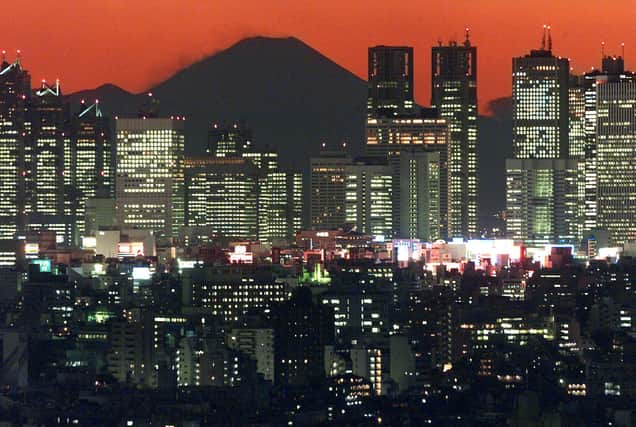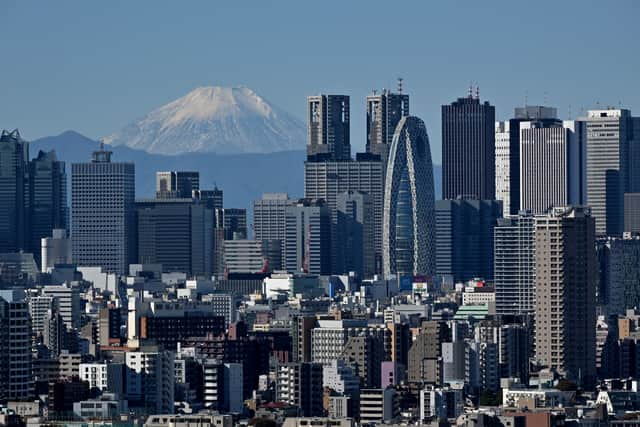Iceland Volcanic Eruptions: Is Mt Fuji a volcano, has it ever erupted and will it erupt again?


With an eruption around the Reykjanes peninsula imminent, and residents around the area only being allowed back to their homes to pick up valuables and necessary items, the rest of the world watches on, awaiting the first volcanic explosion to occur in the area. That, and also schooling up a little bit more about volcanoes as a whole.
As Indonesia is the country with the most volcanoes in the world, in part due to its proximity to the “Ring of Fire” around the South Pacific and Southeast Asia, it comes as no surprise that many eyes are looking over at Japan. The country has quite a history of seismic activity, with many recalling the horror of the Tohoku Earthquake and the subsequent tsunami back in 2011 and the everlasting effects it had in the region.
Advertisement
Hide AdAdvertisement
Hide AdWith its placements on tectonic plates, Japan can boast of having 111 volcanoes with Mount Fuji being the most famous of them all. Not just in Japan either; Mount Fuji has become a landmark synonymous with the natural beauty Japan has to offer, and can be viewed as far as Shinjuku prefecture on a clear day
Fuji happens to be a classic example of an active stratovolcano; also known as a composite volcano, it is a tall, conical volcano characterized by its steep profile and alternating layers of lava, ash, and volcanic rocks. These volcanoes are typically associated with subduction zones, where one tectonic plate is forced beneath another.
The magma that forms stratovolcanoes is often rich in silica, making it more viscous, and leading to explosive eruptions. Due to the higher viscosity of the magma, stratovolcanoes tend to experience explosive eruptions as the gases in the magma cannot easily escape, leading to pressure buildup and explosive release.
When was the last time that Mt Fuji erupted?


Mount Fuji's last eruption occurred in 1707 during the Edo period. This eruption, known as the Hoei Eruption, lasted for about two weeks and resulted in the deposition of ash over a wide area, including Tokyo. Since then, Mount Fuji has not experienced any eruptions.
Advertisement
Hide AdAdvertisement
Hide AdThe eruption occurred in December 1707 and continued into early 1708. It lasted for approximately two weeks. The volcanic ash was carried by winds, affecting a wide area, including the regions around Mount Fuji and reaching as far as Edo (present-day Tokyo).
The fallout of ash on Edo caused various disruptions, including damage to crops, buildings, and infrastructure. The ashfall was reportedly so significant in Edo that it led to disruptions in daily life and impacted the economy. Besides ash, the eruption also produced lava flows, adding to the volcanic deposits around Mount Fuji.
The Hoei Eruption is considered one of the notable eruptions in the history of Mount Fuji. It is classified as a Plinian eruption, characterized by its explosive nature and the ejection of large amounts of volcanic material. The landscape around Mount Fuji was altered by the eruption, with the deposition of volcanic materials contributing to the formation of new geological features
Is there a possibility that Mt Fuji will erupt again?
Time will tell: over the past 2200 years there have been 75 different eruptions. The most recent eruption occurred 300 years ago. Recently, small-scale earthquakes due to the movement of magma beneath the Mt. Fuji area have been regularly observed.
Advertisement
Hide AdAdvertisement
Hide AdThough it may not be soon, Mt. Fuji is expected to erupt at some point in the future - and given the length of time since the last eruption, there is a train of thought that the amount of energy stored since the Hoei Eruption could lead to the next one is enormous.
Comment Guidelines
National World encourages reader discussion on our stories. User feedback, insights and back-and-forth exchanges add a rich layer of context to reporting. Please review our Community Guidelines before commenting.
